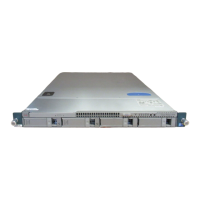CHAPTER 2
Overview
This chapter contains the following sections:
•
Information About Interfaces, page 7
•
VEM Management of LACP, page 8
•
Simplifying the Interface Configuration with Port Profiles, page 8
•
High Availability for Interfaces, page 9
Information About Interfaces
Ethernet Interfaces
All interfaces on the Cisco Nexus 1000V are Layer 2 Ethernet interfaces, which include access ports, trunk
ports, private VLAN ports, and promiscuous ports.
Access Ports
An access port carries traffic for one VLAN. This type of port is a Layer 2 interface only.
Private VLAN Ports
Private VLANs (PVLANs) are used to segregate Layer 2 ISP traffic and convey it to a single router interface.
PVLANs achieve device isolation by applying Layer 2 forwarding constraints that allow end devices to share
the same IP subnet while being isolated by Layer 2. The use of larger subnets reduces address management
overhead. Three separate port designations are used. Each has its own unique set of rules that regulate the
ability of each connected endpoint to communicate with other connected endpoints within the same PVLAN
domain.
For more information about PVLANs, see the Cisco Nexus 1000V Layer 2 Switching Configuration Guide.
Promiscuous Ports
A promiscuous port can talk to all other types of ports. A promiscuous port can talk to isolated ports as well
as community ports, and those ports can also talk to promiscuous ports.
Cisco Nexus 1000V for VMware vSphere Interface Configuration Guide, Release 5.x
7

